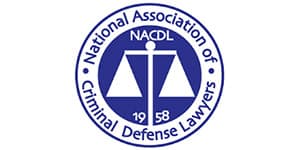Anything involving the sexual exploitation of a minor is illegal under both State and Federal Law. This includes the creation, distribution, or possession of child pornography. State and Federal Authorities are constantly searching the internet for individuals creating and distributing child pornography. These Law Enforcement Agencies are not just monitoring specific websites, but monitoring downloads and the dark web as well. They know that if they can find one individual or instance of this material on someone’s computer, they can use that to find other users who are sharing or creating the material themselves.
Chan Sites
In the early 2000’s, Law Enforcement Agencies were investigating image and message board websites where users were able to upload images and then engage in discussion based around the material. These websites were originally created to discuss music, video games, and television, but as time and technology progressed, they became used for the distribution of pornographic materials. The most common of these websites, 4-chan, has been around since 2003 and has a dedicated user-base around a wide variety of topics. However, some of the smaller “chan” based image boards are closely monitored by Law Enforcement Agencies as a place where users will share, download, and discuss child pornography.
BitTorrent
Another form of technology closely monitored by Law Enforcement Agencies is Peer to Peer file sharing over a BitTorrent network. These networks allow users to distribute data and electronic files over the internet without having to download from one source. Multiple users will “host” material to expedite downloads for other users, meaning that culpability for illegal material is far greater. Users downloading Bittorrent files actually distribute the files across all other users who have downloaded or are in the process of downloading the specific file. Because BitTorrent separates and distributes files in thousands of small pieces, you don’t even need to have downloaded the whole file before your computer shares it with other uses trying to download the same material. Law Enforcement Agencies will download the illegal material and immediately look at what users are “seeding” or “hosting” it to determine more individuals that they need to investigate. Once they have the personal information of these individuals, they will obtain a search warrant for their property.
The Dark Web
The “Dark Web” is a privatized version of the internet that exists on private servers and requires specific software or authorization to access. A common belief is that the Dark Web is encrypted and prevents users from being tracked by other users or Law Enforcement Agencies. While there is truth to the fact that the security is greater, a user’s activities and downloads can still be traced back to their IP address or personal computer. The FBI has reportedly conducted operations that allow it to “de-anonymize” dark web servers and users. They do this by establishing a presence within the network that allows them to see the identities of users and administrators on certain Dark Web pages. The most famous of these operations was the FBI takedown of the “Silk Road,” a website used to traffic arms and drugs, in 2014.
How they Investigate
Child Pornography Offenses, while one of the most serious crimes under the Texas penal code, are one of the easiest crimes for law enforcement to investigate due to the technology at their disposal. Once a Law Enforcement Agency, be it the FBI or the local police force, finds out that Child Porn exists on a certain website or file sharing site, they can immediately begin to monitor it and see who is downloading the material. Once they determine that the material is being downloaded, they will use a warrant to obtain the Internet Protocol (IP) Address of the individual who is making the material available for download. Once they Have the IP Address associated with a specific user, the Law Enforcement Agency can subpoena the Internet Service Provider (ISP) to determine the personal information of the user downloading the material.
Often times the Law Enforcement Agency will monitor the user’s downloads and internet history to determine whether they are merely downloading the illicit material, or if they are the distributing or creating it.
If you are being investigated for possession, creation, or distribution of child pornography, a law enforcement agency may contact you and ask to speak with you about material they suspect may be in your possession. Often times they will explain that you are not under arrest and they do not suspect you of anything, that they are just trying to clear your name off their list and that their questions will be brief. They will encourage you to make an appointment and come in as soon as possible so that they can clear your name and move on to other suspects.
They do this in the hopes that you make a statement without an attorney present.
If a Law Enforcement Agency wishes to speak to you, you have the absolute right to have an attorney present during any questioning. Your attorney will make a determination whether or not it is in your best interest to cooperate with the investigation, and many times, can see just how strong or weak their investigation is. It is never in your best interest to speak to an officer or agent without first consulting an attorney.
The Search Warrant
If the FBI or Local Police serve a search warrant on your property specifically looking for computers or other electronic materials, it’s likely they are looking for evidence of possession or distribution of child pornography.
In order to obtain a search warrant for someone’s personal property, the Law Enforcement Agency must have probable cause that an element of a crime exists at a specific location. It is not enough that an officer or agent believes this material exists, they must have some form of concrete evidence that must be presented to a judge or magistrate before a warrant is issues.
While the Texas Penal Code allows for a Search Warrant to be issued to search and seize any property which possession is prohibited by law, the warrant must state with specificity what type of illegal material is to be collected, and why the officer or agent believes the material will be found at a specific location. In the instance of child pornography cases, the officer requesting the warrant must specify what investigative steps were taken to determine why an individual is suspected to be in possession of illegal material. This includes any information involving IP Address searches, Internet Service Provider subpoena’s, as well as downloads of the information done by the law enforcement agency.
This affidavit, submitted with the search warrant, must show the judge or magistrate exactly what measures have been taken to obtain the material the warrant seeks to seize, what steps have been taken to investigate the material, and exactly where and when the material is suspected to be found. If any of these elements is not plainly and specifically stated, the warrant may be invalid and any evidence seized may be inadmissible in a criminal investigation.
The Charge/Arrest
Once a search warrant is served and electronic devices are taken, it may be several weeks or months before an arrest warrant is issued. Often times a Law Enforcement Agency will take the seized electronics back to a lab to be analyzed and back-log searched to determine if illegal material was deleted off of the device. Once they determine how much illegal material exists, only then will they issue an arrest warrant.
The Fight
There are many ways a qualified criminal defense attorney can attack a child pornography charge:
- The Search Warrant
As stated previously, if a search warrant is not sufficient, is illegally obtained, or does is not properly obtained, any evidence collected using that warrant is inadmissible in a jury trial. It is important for an attorney to investigate not only the investigation of the forensic lab, but to go all the way back to the beginning of the case to see how the Defendant was linked to the material in the first place. It is not uncommon for Law Enforcement Agencies to cut corners to expedite an arrest or an investigation, and it is these mistakes that an attorney can use to your advantage.
- Care/Custody/Control
Merely having the material on your computer or personal device is not necessarily enough for the State of Texas to prove possession. They State must prove that not only was the material in your care, custody, and control, but that it was possessed knowingly. There have been cases where someone purchased a used computer online, or was given a cell phone by a friend that contained illegal images or videos. If the possessor was not aware this material was in their possession, they may have an affirmative defense.
- Proving the Age of the Child
The State or Federal Government must also prove that the child depicted in the images was under the age of 18 and that the user was aware of this. Often times there is little evidence to suggest the actual age of a child depicted in the images. The prosecution must prove that not only did material contain images of a child who was clearly under the age of 18, but that the possessor knew or could not help but know that the images violated the law.
State Charges and Punishment Ranges
Misdemeanors
A class B misdemeanor carries a range of punishment of up to 6 months in the county jail and up to a $2,000 fine. A class A misdemeanor carries a range of punishment of up to a year in the county jail and up to a $4,000 fine.
- Electronic Transmission of Certain Visual Material Depicting a Minor – A person who is a minor commits this offense if the person intentionally or knowingly by electronic means, promotes to another minor visual material depicting a minor, including the actor, engaged in sexual conduct; OR if the person possesses material of a minor engaged in sexual conduct if the actor produced or knew the material was produced by another minor. Texas Penal Code §43.261
- An offense under this section is a class B misdemeanor unless the actor has previously been convicted of another sexually related offense.
State Jail Felonies
The punishment range for a State Jail Felony is 180 days to 2 years in a Texas State Jail Facility and up to a $10,000 fine.
- Possession or Promotion of Lewd Visual Material Depicting a Child – A person commits this offense if the person knowingly possesses, accesses, or promotes visual material that depicts lewd exhibition of the genitals of a person younger than the age of 18, appeals to the prurient interest in sex, and has no serious literary, political, or scientific value. Texas Penal Code §43.262
Third Degree Felonies
The punishment range for a Third Degree Felony is 2-10 years in state prison and up to a $10,000 fine. Several examples of Third Degree Felonies are:
- Sexual Performance by a Child – a person commits this offense if, knowing the character and content of the material, he produces, directs, or promotes a performance that includes sexual conduct by a child younger than the age of 18. Texas Penal Code §43.25
- Possession or Promotion of Child Pornography – a person commits this offense if the person knowingly or intentionally accesses with intent to view, visual material that visually depicts a child younger than 18 years of age at the time the image of the child as made who is engaging in sexual conduct.
(This is a second degree felony if the defendant has previously been convicted of this offense, and a first degree felony if the defendant has twice previously been convicted of this offense).
Second Degree Felonies
The punishment range for a Second Degree Felony is 2-20 years in state prison and up to a $10,000 fine. Several examples of Second Degree Felonies are:
- Employing a Minor – A person commits this offense if the person employs, authorizes, or induces a child to work in a sexually oriented commercial activity or in a place of business permitting, requesting, or requiring a child to work nude or topless. Texas Penal Code §43.26
(This becomes a first-degree felony if the age of the victim is less than 14 years)
- Sexual Performance by a Child – a person commits this offense if, knowing the character and content thereof, employs, authorizes, or induces a child younger than the age of 18 to engage in sexual conduct or sexual performance. Texas Penal Code §43.25
(This becomes a first-degree felony if the age of the victim is less than 14 years)
First Degree Felonies
The punishment range for a First Degree Felony is 5 years to Life in state prison and up to a $10,000 fine. First degree felonies are often times an enhancement of a lesser felony. If the victim is under the age of 14, the crime is enhanced to become a first degree felony, despite whether or not the person in possession of the material knew her age.
Federal Charges and Punishments
Federal Sentencing and “Offense Level”
Unlike State Sentencing, the Federal Sentencing Guidelines carry a wider range of punishment that is determined based on the specific factors of the alleged offense. Whereas a state charge for possession of child pornography carries a specific year-based range of punishment, Federal Sentencing is determined in months, not years. The Federal Sentencing Guidelines have a table that allows for the calculation of a specific sentence based on a Defendant’s “Offense Level”. Once the final offense level and criminal history level is determined, a judge will have a specific month-based range of punishment available for sentencing.
Under the Federal Sentencing Guidelines, there are several offenses that a Defendant can be charged:
- Trafficking in Material Involving the Sexual Exploitation of a Minor;
- Receiving, Transporting, Shipping, Soliciting, or Advertising Material Involving the Sexual Exploitation of a Minor;
- Possessing Material Involving the Sexual Exploitation of a Minor with Intent to Traffic; and
- Possessing Material Involving the Sexual Exploitation of a Minor
The offense level for these crimes takes into account several factors including:
- Whether the material involved a prepubescent minor;
- Whether the Defendant intended to traffic the material;
- Whether the Defendant benefited financially from the material;
- Whether the Defendant distributed the material to a minor;
- Whether the material portrayed sadistic or masochistic conduct or depictions;
- The amount of material possessed by the Defendant;
Another differentiation from State Court is that the Federal system does not allow for early release or “parole”. This means that the Defendant, once convicted and sentenced, will be required to serve the entirety of their sentence. The only exceptions for this include a drug rehabilitation departure.
Federal Prison
You’ve been convicted and sentenced to prison, what happens next? After sentencing, the Federal Bureau of Prisons will make a determination as to where you are going to be spending your time while incarcerated. The Designation and Sentence Computation Center (DSCC), located in Grand Prairie Texas, looks at several different factors when determining where you will be sent. These factors include the nature of the offense, specific needs of the inmate, location of their release residence, and anything else included in the sentencing report from the court. All materials from sentencing Court, U.S. Probation Office, and the U.S. Marshals Service and processed and considered when making a determination as to where you will be serving your time. As your sentence progresses, different needs and designations may change for a specific inmate. They can be moved due to security reasons, medical issues, programing needs, or even judicial recommendations.
Segregation
What happens when I am sent to prison, will I be living in general population? One of the biggest concerns a Defendant will face when being sentenced to prison is their safety while incarcerated. Many rumors and stereotypes exist regarding inmate safety in prison, specifically inmates charged with sexual offenses involving children. In reality, Federal Prison can be a safe and productive space for an inmate. The Federal Bureau of Prisons recognizes the safety concerns of inmates convicted of sexual related offenses and will work with institutional assignment, unit management, Psychology Treatment Programs, and re-entry planning to promote the well-being of sex offenders while incarcerated. This helps both the offenders and society by reducing the likelihood of re-offend after release. Upon arriving at a Federal Prison Facility, all factors will be considered regarding safety and placement. Many times, inmates can request to be segregated to reduce security concerns for both the inmate and prison staff. During sentencing, it is important for your attorney to raise safety concerns and request specific programs to make the prison experience safer and more productive.
Programs
What programs are available to me if I am in Federal Prison? There are two designated programs for sex offenders who are sentenced to federal prison, The Residential and Non-Residential Sex Offender Treatment Program. These programs are offered at specific facilities that house a larger population of inmates convicted of sex-related offenses. These programs allow for inmates to be housed together in a lower security setting and work with counselors to reduce the risk of future offending. The severity of the offense and designation by the sentencing judge can determine whether or not an inmate will be placed in a residential or non-residential program.
The residential program involves high intensity programming for a period of 12 to 18 months and is designed or inmates with a higher risk of re-offending. The Non-residential Sex Offender Treatment Program consists of outpatient groups meeting 2-3 times a week for several hours and is typically completed within 12-18 months. Participants learn basic skills and concepts to help them understand their past offenses and to reduce risk of future offending. This treatment is offered to offenders evaluated to have low to moderate risk of reoffending. The main benefit to being placed into one of these programs is the safety and security for the inmate. Being placed in a facility that houses sex-offender inmates greatly reduces security and safety concerns for staff and inmates.
How do I get into a Program?
In short, the best way to get into a rehabilitation program or a minimal security prison is through your attorney. When you enter into a plea agreement with the Federal Government you are immediately interviewed by the United States Probation Office. This interview is used not only for the punishment that a Defendant will received, but also to determine any specific sentencing conditions or requirements. This information is formalized into a Pre-Sentencing Investigation Report. The Officer preparing this report will provide a copy to your attorney so that the attorney has a chance to object, request corrections, or made additional requests before sentencing.
During sentencing, your attorney will be able to voice these concerns and objections to the judge, as well as request specific sentencing instructions to be noted by the court. These instructions can include requests for placement at specific prisons, as well as participation requests for certain programs. If the judge takes judicial note of these request, they are forwarded to The Designation and Sentence Computation Center where placement is determined.
FCI Seagoville
In 2017 our office represented a man in his early 20’s who was charged with the federal crime of possession of child pornography. The FBI had been monitoring his downloads after having subpoenaed his Internet Service Provider to provide his personal information after tracking several downloads to his specific IP address. After the forensic analysis was completed on his electronics, it was determined that he was in possession of more than 650,000 images and videos containing child pornography. We were immediately able to get to work analyzing the search warrants and evidence the government had against our client. The Defendant in this case was looking at up to 20 years alone for the possession, and potentially significantly more time if they determined that he was distributing the material by seeding them on a BitTorrent protocol.
After discussing the case with both the FBI and the US Attorney’s office, we were able to determine that the warrants were legally obtained and that the material could in fact be attributed to the Defendant. The Defendant decided that he wanted to cooperate fully with the investigation to mitigate potential punishment, and we were able to guide him through this process.
After debriefing with the FBI, being interviewed by the US Probation Office, and cooperating fully, we received the Pre-Sentence Investigation Report that recommended the appropriate punishment would be 10 years in a Federal Correctional Institute. We immediately began by objecting to the calculation of points, made a notation of the Defendant’s full cooperation, and wrote a sentencing memorandum to the court outlining how rehabilitation and placement in a low-risk facility was the more appropriate choice than the 10 years the probation department was recommending.
During sentencing, we were able to make all of our objections to the judge, as well as outline our plan for rehabilitation. After all was said and done, our client was sentenced to 78 months (6 and a half years) to be served at FCI Seagoville in Dallas Texas. This will allow him to remain close to his family, as well as participate in the Sex Offender Rehabilitation Program. He will be able to continue his collegiate education, and will serve his entire time in a low-security, low-risk facility with other inmates who are undergoing rehabilitation.










